Science Snapshots: All Those Crazy Weather Words
Thank you to Emma for inspiring this post!
The weather world is full of fantastic phenomena: mammatus, moist tongues protruding from the Gulf of Mexico, pinhole eyes, dry slots, hoar frost, haboobs, Panhandle hookers, rear inflow. While I try to anticipate my audience always, sometimes when you're immersed in suction vortices day in and day out it can be hard to remember to properly define what exactly a wave of monsoonal moisture penetrating the dry slot actually means.
For you, dear Peckers, I provide a quick reference guide of some terms that have come up in previous weather-related Science Snapshots. Please always feel free to ask for clarification in the comments, and depending on what comes up I'm happy to do more of these.
Cyclone
This is an area of rotation around a low pressure center. It can be small in size, like a tornado or dust devil, or large, like a tropical storm or an area of low pressure. Cyclones rotate counterclockwise in the Northern Hemisphere and clockwise in the Southern Hemisphere. The opposite, an anticyclone, rotates the opposite direction around an area of high pressure.
Meteorologists generally only refer to the larger scale rotations as cyclones, but it's still in popular usage for the smaller scale rotations like tornadoes.
American Meteorological Society (AMS) definition available here.
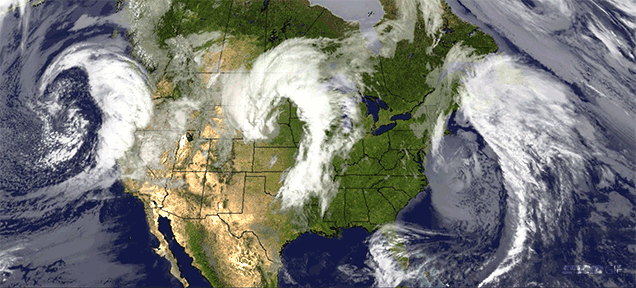 |
| Each of the comma-shaped clouds circulating in this gif are cyclones (low pressure systems). Via Gizmodo. |
Monsoon
A monsoon is a seasonal shift in wind direction. For example, in Arizona the prevailing winds generally blow from the west, but during the summer monsoon the winds shift to predominately blowing from the south. Many areas of the world experience this seasonal shift in dominate wind direction. Often, this is accompanied by a change in weather conditions (dry to stormy/rainy). The rain itself is not the monsoon, the wind shift is the monsoon.
See this previous Science Snapshots for more monsoon info.
AMS definition available here.
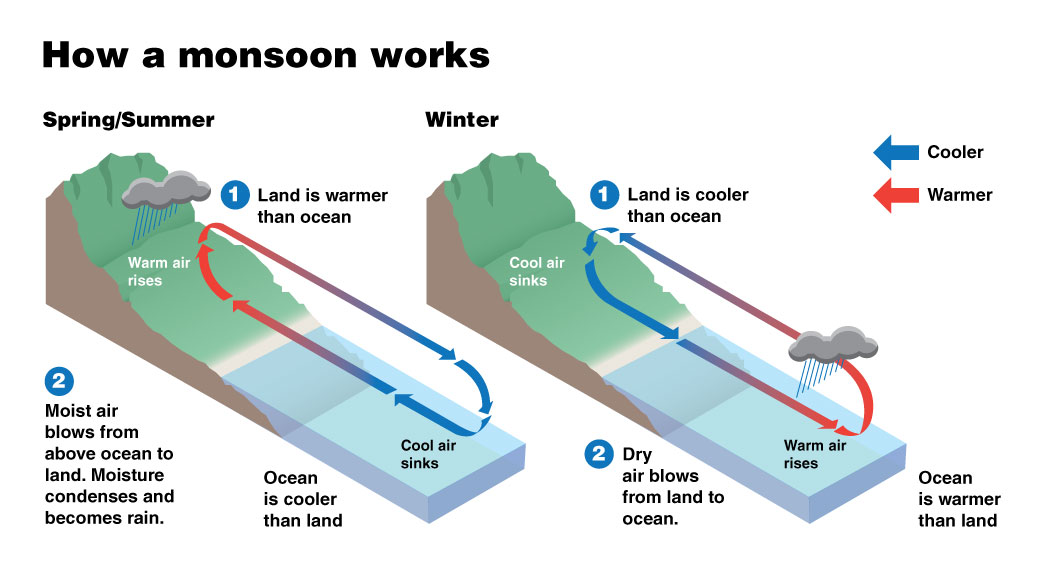 |
| Monsoon schematic via NOAA |
Tropical Cyclone: a.k.a Hurricane, Tornado, Cyclone
A tropical cyclone is a cyclone (see above) that occurs in the tropics (how's that for defining a word using the word?).
If you haven't heard the term tropical cyclone before, perhaps you've heard of it by other names such as tropical depression, tropical storm, hurricane, or typhoon. These are based on intensity and/or location:
- A tropical depression has winds up to 34 knots (39 mph/63 kph)
- A tropical storm has winds above 34 knots up to 64 knots (73 mph/119 kph)
- Hurricanes have winds 65 knots or higher (75 mph/120 kph) and is located in the Western Hemisphere (Atlantic, Eastern Pacific)
- Typhoons also have winds 65 knots or higher and are located in the western North Pacific
I was taught in school that Australians called tropical cyclones Willy Willies. But the internet is telling me that's actually the Australian term for a dust devil (see below). Weigh in, Australian peckers!
AMS definition available here.
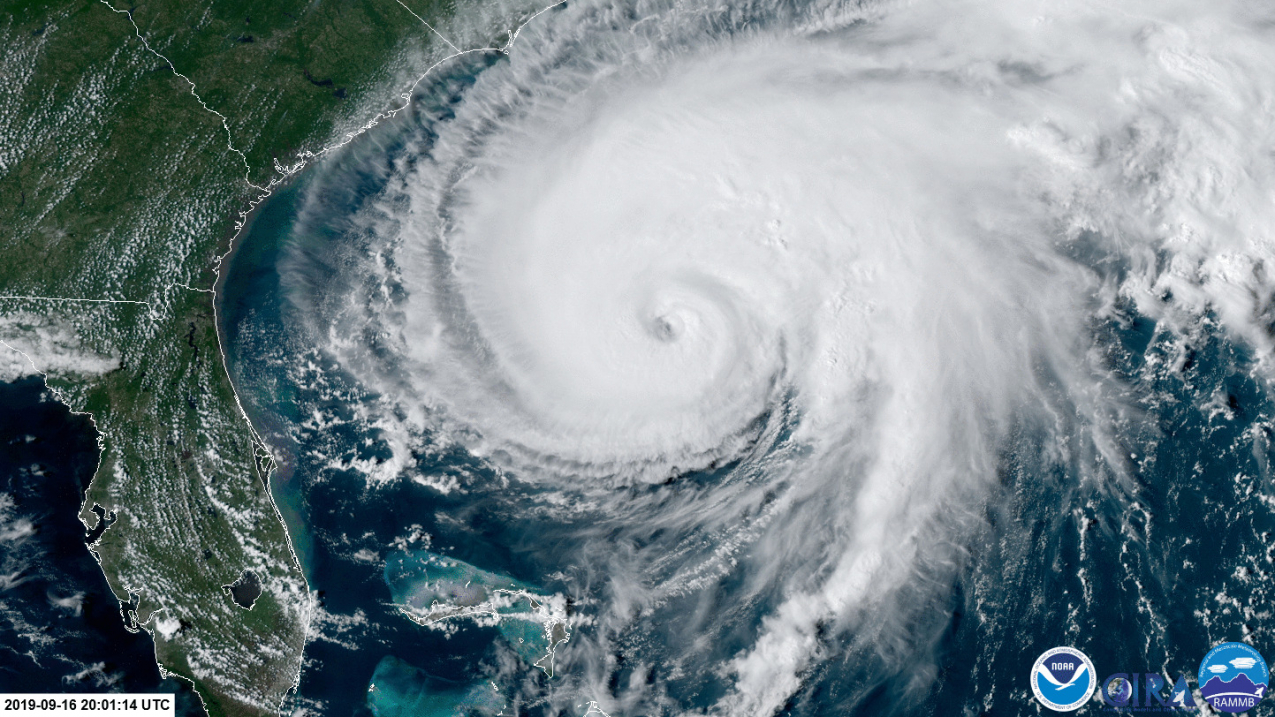 |
| Hurricane Humberto (2019) via NOAA |
Tornado
A tornado is a rapidly rotating column of air extending from the surface up to a thunderstorm. It's sort of one of those things you know when you see it, but is a little hard to write up in a definition.
According to the AMS, characteristics of tornadoes include: diameter of 2 km (a little over a mile) or less, the wind changes about 90 mph/144 kph as you move across the tornado near the surface, and it's rotating around a center point.
Tornadoes usually form out of a supercell thunderstorm, defined below.
AMS definition available here.
 |
| Source: Your Captain |
Waterspout and Landspout
Technically, a waterspout is a tornado over water. However, that's not the whole story.
Sometimes tornadoes do form or travel over water. But in general, a waterspout forms differently than a tornado. Tornadoes form from a parent storm that is also rotating (see supercell below), whereas waterspouts normally form without a rotating storm/supercell. At the end of the day, it's where the source of spin comes from. A tornado's spin comes from its parent storm. A waterspout's spin comes from near the surface.
A landspout is simply a waterspout over land: a tornado whose source of spin comes from near the surface rather than a rotating storm above. These waterspouts and landspouts, also called non-supercell tornadoes, tend to be weaker and shorter-lived than a standard tornado.
AMS definition of waterspouts available here.
AMS definition of landspouts avilable here.
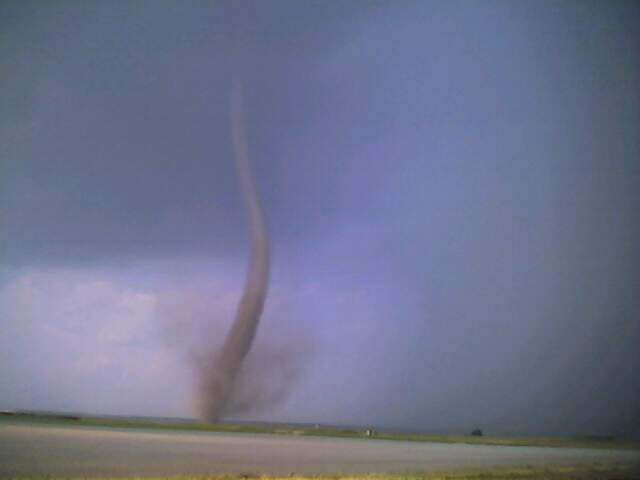 |
| Waterspout (above) and landspout (below), both via NOAA's National Weather Service (Key West and Grand Rapids) |
Gustnado
A small spin up that occurs along a gust front: that rush of cold wind that hits you when a thunderstorm is approaching (see shelf cloud on supercell schematic below). They are almost always weak and short lived.
AMS definition available here.
 |
| NOAA/Sue VanBochove via Global News |
Supercell
A supercell is a thunderstorm on steroids. The basic structure of a thunderstorm is it has an updraft and a downdraft. Your garden variety everyday storm first has an updraft (air rising) followed by the downdraft (rain falling). A supercell has both side by side, so it is able to sustain itself for anywhere from one to ten hours, and the updraft is rotating. This is where the rotation of a tornado is thought to originate. Not every supercell produces a tornado - in fact, less than half do. We have some thoughts as to why, but at the end of the day we don't really know why some do and some don't. If you get a tornado warning with no tornado, that's likely why: it's a rotating storm capable of producing a tornado, but we don't have any way to tell whether it will or won't. Supercells also can, and usually do, have strong winds and large hail. Below is a schematic of a supercell alongside a picture.
AMS definition available here.
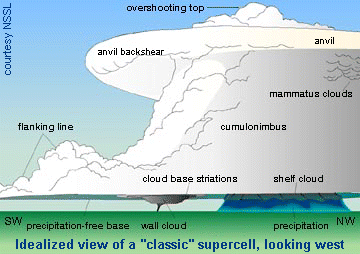 |
| Supercell schematic via NOAA's Storm Prediction Center |
 |
| IRL supercell via your Captain |
Dust Devil
A well-defined dust whirl caused by rising air on a hot and calm day. Not associated with thunderstorms. They typically aren't very strong, but the strongest can occasionally cause light damage. They're also common on Mars!
AMS definition available here.
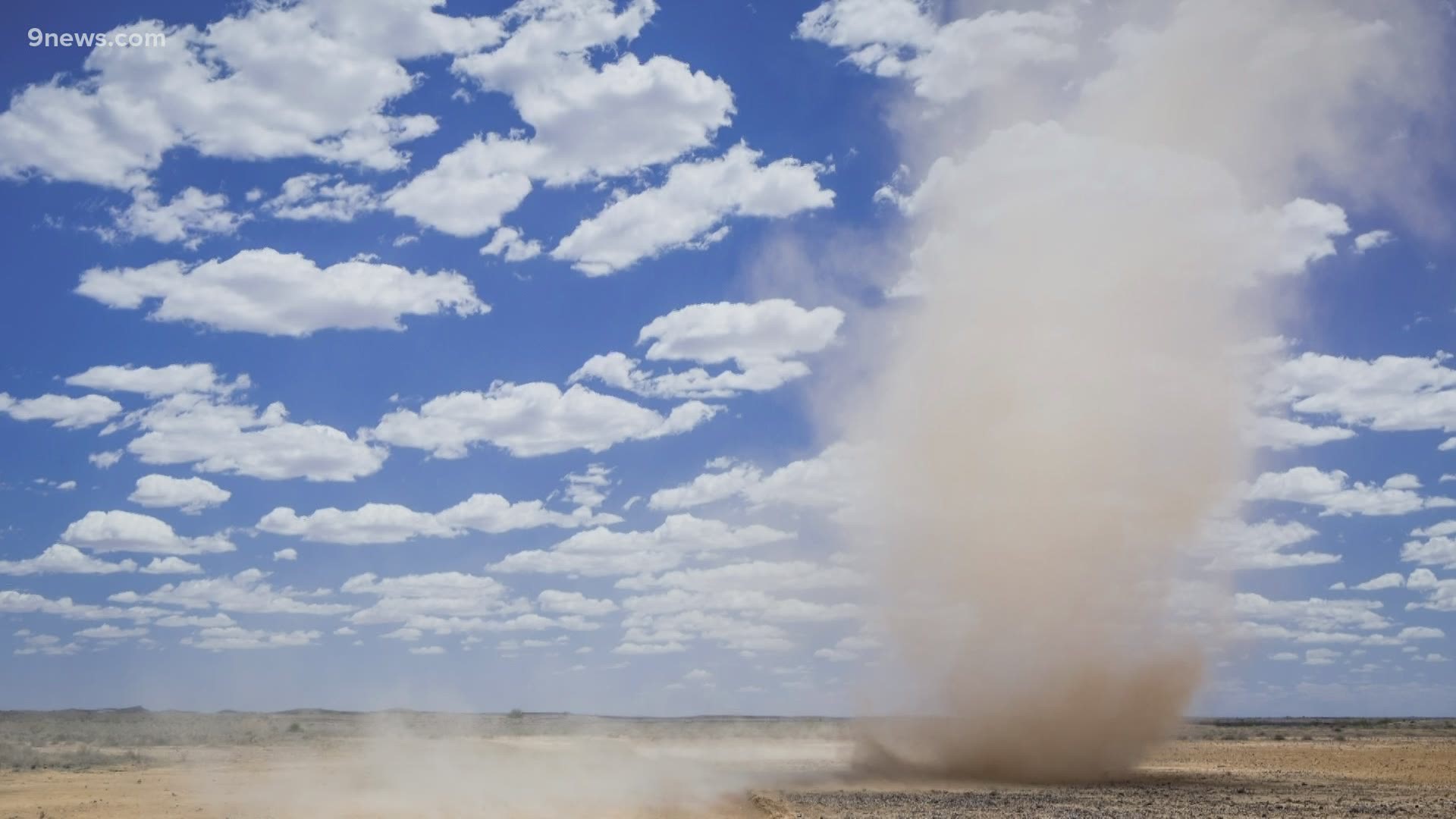 |
| Pretty dust devil via 9news |
I'll keep popping into the comments if there are any questions...I likely still wasn't very clear since these things are burned into my brain.



Comments
Post a Comment